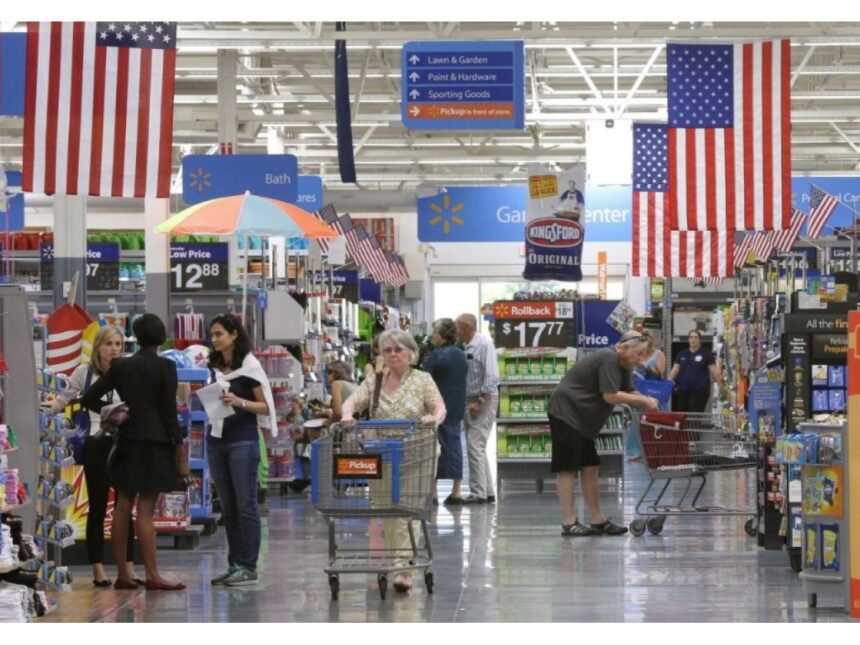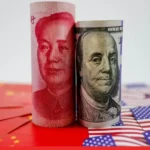WASHINGTON — The US economy is bouncing back, with inflation hitting its lowest level since February 2021. The Bureau of Labour Statistics (BLS) reports that the Consumer Price Index (CPI) rose by just 2.3% in April 2025 compared to the previous year, edging down from 2.4% in March.
This is the closest inflation has come to the Federal Reserve’s 2% goal since prices surged after the pandemic. This improvement, along with steady job growth, lower fuel prices, and a stronger dollar, points to a positive shift as President Donald J. Trump begins his second term, which started in January 2025.
The April CPI, published on 13 May 2025, shows that price rises are slowing across many everyday goods and services. Core inflation, which leaves out the more unpredictable food and energy prices, climbed 2.8% over the year—the smallest increase since March 2021.
Airfares dropped 7.9%, fuel oil fell 9.6%, and clothing prices also dipped. Groceries had their sharpest monthly price drop in almost five years. For example, egg prices fell 5.9% from March to April, although they remain much higher than last year due to ongoing supply issues from avian flu.
White House Press Secretary Karoline Leavitt said the latest inflation numbers show President Trump’s economic approach is working. She pointed to efforts to cut red tape and boost domestic energy as helping lower costs for families and businesses. Administration officials also say the fall in core inflation proves Trump’s policies are reversing the price spikes, sometimes called “Bidenflation,” that hit 9.1% in June 2022.
Most economists credit the drop in inflation to weaker consumer demand and cheaper energy. Some warn, though, that Trump’s broad tariffs—including a 10% tax on most imports and higher charges on Chinese goods—could push prices back up soon.
Mark Zandi, chief economist at Moody’s Analytics, said the April data looks promising, but it doesn’t fully capture the effects of the new tariffs yet. He noted that businesses may pass those extra costs to shoppers.
US Job Market Stays Strong and Lifts Confidence
The job market is holding up well. In March 2025, employers added 256,000 jobs, beating expert predictions, according to the BLS. The unemployment rate stayed at 3.8%, one of the lowest in recent history, showing the economy is holding steady despite global trade uncertainty.
Manufacturing is seeing new investment. GE Aerospace plans to spend $1 billion on its US operations, creating 5,000 jobs across 16 states. Merck just opened a $1 billion facility in North Carolina as part of a long-term $8 billion plan. The Asahi Group is also putting $35 million into expanding in Wisconsin, adding more local jobs.
Stephen Miran, head of the Council of Economic Advisers, said the focus on fair trade and American workers is driving these investments. The White House believes its push to reduce regulation and encourage US production is paying off. Still, there are concerns that tariffs could disrupt supply chains and hurt industries that rely on imports.
Fuel Prices Fall, Easing Pressure on Households
Fuel costs have dropped, giving families some financial breathing room. The national average price for regular petrol was $3.18 per gallon on 13 May 2025, down from $3.63 a year ago, according to AAA. Fuel oil prices also slid by 9.6% from March to April, which helped bring down inflation.
The White House credits Trump’s focus on boosting domestic energy and relaxing regulations for the fall in prices at the pump. However, experts say global trends, such as weaker demand and increased oil production by OPEC+, have played a big part. Oil prices dropped to $69 a barrel, the lowest in nearly four years.
Denton Cinquegrana from Oil Price Information Service said the lower prices are good for consumers, but they also point to deeper economic concerns. With the busy summer travel season ahead, prices could rise again.
Trump has said petrol prices have dropped to $1.98 in some states, but AAA figures show the lowest average is $2.66 in Mississippi. Economists warn that rising summer demand and any trade problems could push fuel prices back up.
US Dollar Grows Stronger as Trump Tariff Talks Continue
The US dollar has gained value against other major currencies, supported by faith in Trump’s economic policies and the Federal Reserve’s careful approach to interest rates. A stronger dollar has helped lower the cost of imports for American buyers. Still, this makes US exports more expensive, which can hurt farmers and manufacturers.
Trump’s trade strategy, which now includes a 20% tariff on Chinese goods and new reciprocal tariffs, has created both optimism and some worry. A 90-day pause in tariffs with China, announced on 12 May 2025, led to a stock market boost, but many economists are cautious about what might come next.
Elyse Ausenbaugh from J.P. Morgan Wealth Management said that while a stronger dollar helps shoppers, it could cause problems for exporters if trade tensions get worse.
Despite recent gains, some problems remain. While grocery price increases have slowed, they rose 2.4% over the past year in March, up from a 1.9% rise in January. Rents climbed 4% over the past 12 months, although growth is down from earlier peaks. The University of Michigan’s consumer confidence rating dropped to 64.7 in February 2025, the lowest since November 2023, as people worry about prices going up due to tariffs.
Critics argue that Trump’s policies could bring short-term benefits but might cost more in the long run. The Centre for American Progress estimated that tariffs might add 1-1.2% to prices, costing households around $1,600 to $2,000 a year. The Economic Policy Uncertainty Index hit 234 in February 2025, the highest since December 2020, showing that businesses are uneasy about trade policy swings.
Some analysts also question whether the drop in inflation will last. Joseph Brusuelas from RSM said that while the current data is good, it doesn’t show the full effect of new tariffs yet. If people keep spending, prices might climb again. The Federal Reserve is not expected to cut interest rates soon, so loans may stay expensive for both families and businesses.
As Trump’s second presidency continues, the administration faces the challenge of keeping the economy growing while holding down inflation. The latest CPI figures are encouraging, with the lowest inflation in four years, strong job growth, and lower fuel prices. Still, tariffs and trade disputes could push prices higher, and some experts predict core inflation could reach 3% by the end of the year if trade tensions rise.
For now, many Americans are seeing some relief. “Lower gas and food prices make a big difference for my family,” said Sarah Thompson, a single mum in Ohio. “I hope this keeps up.” How well Trump maintains these economic gains while handling tricky trade issues will help define this term in office.
Sources: Bureau of Labour Statistics, AAA, White House, Reuters, NBC News, Bankrate














